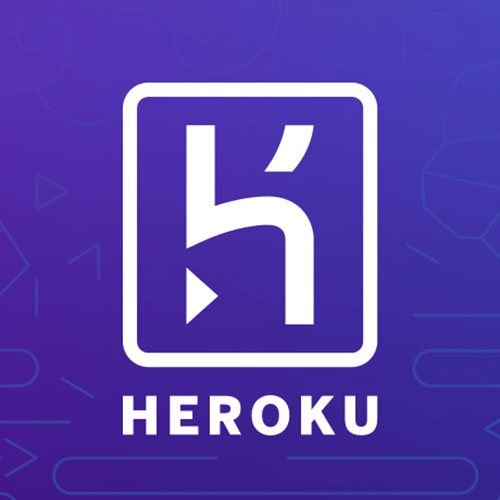
How I Started A $4.5K/Month Digital Services And Software Development Agency
Hello! Who are you and what business did you start?
Hello, my name is Brian Nyagol. Thank you for stopping by to read my story. I’m the founder and CEO of Brainverse Technologies, a software and branding company based in Kenya, Africa, and focusing on helping small and medium-sized enterprises digitize their business, digitalize their processes and build effective digital footprints. We believe a strong brand is one that exudes irresistible attraction that sticks in the minds of people, in whichever form they get in touch with it. That is our definition of a perfect brand.

We are keen on our customer satisfaction journey, an in-house methodology that has made most if not all of our projects a success. We work with companies to determine their software and digital needs and help them curate a digital strategy that fits seamlessly into their business model. The goal of this interaction is to ideate and build software and systems that work for our clients and design creative and powerful branding that communicates their commitment to what they do. The last streak of this relationship is to craft and implement an irresistible digital go to market strategy that helps to push the brand - through social media branding, website design, and digital business positioning.
All our services have evolved due to changing customer needs since their inception. For instance, two years ago, we adopted total business brand design - where we put together consolidated brand design packages that fit into any company size, whether a start-up or a fast-growing company. With these branding packages, we are now able to deliver more value, 100% brand consistency, and provide just what is needed at every stage of the business. The goal is to build a powerful and delightful business brand that makes everyone who gets in touch with it deeply connect with it. If it exudes
elegance and business competence at a glance then we are happy and you are happy as well.
Our flagship service is a custom software development and our biggest success has been the design and development of an end-to-end fintech solution for one of our customers that involved secure integration with one of the local banks, Kenya’s Largest Telco, Safaricom’s mobile money service, which has been used to process over $100,000 in transactions. The beauty of this is that we did not get there in one day and we have gathered experience and many lessons along the way, putting us at the helm of the industry.
The future of work is remote teams, and we are making sure our company is well prepared for that. We have operated for 4 years 100% remotely with our team working from all over the country. We are currently a team of 14 forming 5 divisions - Mobile Apps Division, Systems Development Division, Design Division, Website Development Division, and Business Support Division composed of marketing, business development, and public relations. Managing remote teams is a rare skill that is going to be a market necessity in the near future and this is the reason why we inspire and groom our team leaders on these skills every single day.
The outbreak of COVID-19 has inspired us to start building a consulting & training business in *Remote Teams Management (for Entrepreneurs & Managers), out of our 4 years experience working remotely. We are already consulting for 4 companies in Kenya, and 1 in Canada.
On average, we turn in monthly revenue of $4,500, 64% of which come from new large project engagements, and the rest from upgrades, maintenance, and short term projects. We get 80% of our projects through referrals from previous customers and 20% from our offline and digital direct marketing efforts.
What's your backstory and how did you come up with the idea?
I started Brainverse when in my second year in college, driven by the necessity to finance myself at school. Like every other startup, I started solo. My first gigs were about designing blogs and simple websites for my friends and some businesses. I must admit that the starting point was lousy, fuzzy, and uncalculated. I had no clear vision of what I wanted the company to be, beyond adding more money in my pocket. I could afford to be off duty when I wanted, and hey, I was a student, living in his own terms.
Beginning of finding a purpose - Brainverse Recess
In early 2014, I started on a project that sprouted from my urge to develop a product for young people, especially those on campus. With 2 other friends, we started a social networking site - VibeCampo, our own version of Facebook that would address the needs of young people and help them nurture their talents. We delved into the depths of learning everything we needed to make this a success. I truly admit that running such a venture was not easy, without a constant stream of funding, since we had no idea how to implement a proper revenue model.
Before I knew it, I had it all to myself, staggering and fumbling to make it work. I started building a small team, and we settled only for this vision for 4.5 years straight, while we grew internally but very slowly. With resilience, aggression, and hard work – I tried my best to keep it going, with a small team of campus ambassadors until the project reached it’s retirement in 2018, with over 20,000 users. It was a hard thing to do! I had lost focus on Brainverse and the only consolation was that I would get a chance to focus on it again.
Building the company from scratch
In 2018, with all the lessons I had learned from VibeCampo, I decided to revive Brainverse Technologies strongly. I started building a team that would take it to the next level. I was out of campus and I knew I had to be very objective with every step I made. This started off by incorporating the company, rebuilding it’s a website, reconnecting with old clients, and hiring the right people for the job. Two years down the line, we have grown into a family of amazing people working together to achieve one goal.
Take us through the process of designing, prototyping, and manufacturing your first product.
It has taken us months to develop a proper development process and it is one of our biggest assets. Let’s take an example of a client who needs a custom system for their business.
Understanding the idea
We hold a meeting between the client, the serving division members, and a representative of the Business Support Division.
We encourage clients to serve us with NDAs to allow them to fully open up so we understand the concept very well.
User Journey
We come up with a user journey in the form of a flow diagram, and demonstrate this to the client, in another meeting. With this, the client is able to make early corrections to our understanding of their problem.
We amend this user journey until the client is comfortable with it.
Implementation Strategy, Needs Analysis & Costing
At this stage, we answer a couple of questions:
What technologies will this project need?
Do we have the necessary skill sets in the house? What sections will we need to outsource if any?
What is the human resource need for the project? How many developers will work for how many hours a day for how long?
Which divisions will do what part of the project at what time?
The answers to this question help us in generating a favorable costing structure for the project and an implementation strategy.
We share the costing with the client and come to an agreement.
Contract Signing
Service contracts help a lot in fostering trust between the client and us and puts us to the task. It’s good for both parties.
Prototyping
Now that we know what the client needs we use our favorite prototyping tool - JustInMind to design system prototypes and present them to the client.
The client can already feel the glimpses of the end product by reviewing the prototype, and can still amend our understanding of the solution to their problem.
At this stage, we are 100% sure that what we are building is what is required. This is an important procedure to prevent unnecessary reworks in the future
Development & Testing
This is where the magic takes place 😎. We simply develop. We have an internal Quality Assurance team made of one person from each division that performs testing on all systems and gives a test report to the implementing departments.
Hire only when you really need an additional resource and you must be able to justify this. Having a big team is fun, paying them isn’t, especially if there is no proper value addition.
Since launch, what has worked to attract and retain customers?
Like mentioned, we get 80% of our customers through referrals. We have put a lot of effort into making sure that our customers are satisfied and happy. This allows them to refer their friends, family, and colleagues to us with a lot of trust. How do we do this?
Information/Education
Not all customers who need technical products are technical, in fact, most of them are not. Information is the one thing we are very generous with. From the time we start conversing with a customer, after listening to them keenly, we ensure they leave better than they came. We help them visualize their idea and feel the end product in their tongues.
We help them clear any doubts in what they want to achieve, and even ask leading questions to help realize aspects they’d never thought about. Most customers have only fuzzy ideas for solving their problems or achieving their dreams. We help them bring these ideas to life even before we ask for the money.
This builds confidence and rapport. Customers are happy when they know you get what they want.
Being open & true.
When we mess up, we accept it and fix it, end of discussion.
When we are late, we call them before they do.
When we can’t do something, we inform them when we have outsourced that specific part to someone we trust.
When they call, or email, we pick up or respond, even if we have nothing to report on. For real, they may just be saying “Hi.”
We let them know even the slightest milestones and successes we get in their projects.
Gathering Feedback
Here is where the rapport we developed day one comes in. They can share with us genuinely the things we can do to improve and point out what we did right and wrong.
It is easy to get tempted to bite more than what you can chew, thinking that you can easily outsource and get it done. I did not realize that this is a poor strategy if you want to retain the trust of your customers and build a long-enduring business.
How are you doing today and what does the future look like?
We spend an average of $200 on online advertising every month, not with an aim of getting customers, but telling anyone out there that we exist and we are their best shot at whatever they want to get done.
We have 40% more staff than last year, and we project a 30% growth in revenue for 2020, although this year’s January - April revenues are lagging behind those of last year due to the effects of the COVID-19 pandemic.
In the past 2 years, we have served a total of 113 clients with our different products and services.
We launched version 2.0 of our first Software as a Service (SaaS) product - Startup Suite which aims at digitizing the business workflow for small and medium companies in Kenya and beyond. We rebuilt it to form part of our response to COVID-19 pandemic. Actually, we’re currently looking out for funding to scale the product. Check out our pitch deck.
Update: May 22nd 2020: Startup Suite emerged as the best innovation our of 300+ submissions in the Great COVID-19 Hackathon organized by Konza Technopolis, UNDP & other partners.

In the spirit of Altiora Peto (“A Latin phrase meaning - I seek higher things”) one of our core values inspiring us to continuously improve, we have been able to save 19.8 man-hours a weekjust by making our meetings more effective, all that we have plunged back to improve team productivity.
We are combining our marketing efforts with CSR by sponsoring youth football tournaments and other CSR based activities.
We are doing a couple of activities in our response to the COVID-19 pandemic to help cushion businesses and individuals form its adverse effects. We are partnering with various organizations to achieve some of these responses.
Through starting the business, have you learned anything particularly helpful or advantageous?
In our IT business, it is easy to get tempted to bite more than what you can chew, thinking that you can easily outsource and get it done. I did not realize that this is a poor strategy if you want to retain the trust of your customers and build a long-enduring business.
Partnerships with other IT companies have got us a couple of high-value projects. Neither a man nor a company is an island, and one should strive to be in the company of companies that help them grow.
I believe that employees are directly responsible for the growth of a company and hence should feel the growth for which they labor. Since we started a bonus program and annual salary increments our staff have been more agile, open, and free to put their all in the company. Every company should put its employees at the center of its growth strategy.
For entrepreneurs starting their businesses, it’s good to know that the business’s money is NOT yours and your money is NOT the business’s. For as long as you cannot differentiate the two, your business will struggle. The best thing is to give yourself a salary and stick to that. Only award increments when doing so to your entire staff, and with merits.
When you manage a team of more than 10 young men and women, you not only need your leadership skills, but also emotional intelligence in play. It will help you understand your staff better, and know how to manage their expectations, and be a good leader to them.
What platform/tools do you use for your business?
Project Management, HRM & CRM
- Startup Suite: Manages our HR, CRM, and Projects Management functions.
Client Communication & Meetings
- Whereby: No Registrations, Simple, and Easily accessible.
Prototyping
- JustInMind: Simple and multi-platform export.
Design
Cloud Services (VPS)
- Digital Ocean: Simple Deployment & Management
Transactional Email Integration
- Mailgun: Straight forward integration, and multiple domain support plus 10,000 free monthly emails.
Team Communication (Chat, Meetings, Calls)
- Microsoft Teams: We can add interns and students, attach Guest users, and only get licenses for our contract staff.
What have been the most influential books, podcasts, or other resources?
I have read the following books that have changed the way I think, work, and live:
- Pour Your Heart into It - Howard Schulz
- The Art of The Start - Guy Kawasaki
- Awakening The Giant Within - Anthony Robbins
- Rework - Jason Fried & David Hansson
I read these blogs:
Advice for other entrepreneurs who want to get started or are just starting out?
Hire when you tire: Hire only when you really need an additional resource and you must be able to justify this. Having a big team is fun, paying them isn’t, especially if there is no proper value addition.
Create your company’s core values and cultivate a culture around them. It takes time to build a culture so do not be in a hurry.
The best way is to do it in piecemeal. Introduce a few things with a smaller team, add onto them as you hire more people, so they come in with fresh energy to pick up with the rules of the house. Even a small company can build a culture.
Make sure your customers can feel and experience, not read or hear your core values.
Where can we go to learn more?
If you have any questions or comments, drop a comment below!

Download the report and join our email newsletter packed with business ideas and money-making opportunities, backed by real-life case studies.

Download the report and join our email newsletter packed with business ideas and money-making opportunities, backed by real-life case studies.

Download the report and join our email newsletter packed with business ideas and money-making opportunities, backed by real-life case studies.

Download the report and join our email newsletter packed with business ideas and money-making opportunities, backed by real-life case studies.

Download the report and join our email newsletter packed with business ideas and money-making opportunities, backed by real-life case studies.

Download the report and join our email newsletter packed with business ideas and money-making opportunities, backed by real-life case studies.

Download the report and join our email newsletter packed with business ideas and money-making opportunities, backed by real-life case studies.

Download the report and join our email newsletter packed with business ideas and money-making opportunities, backed by real-life case studies.























